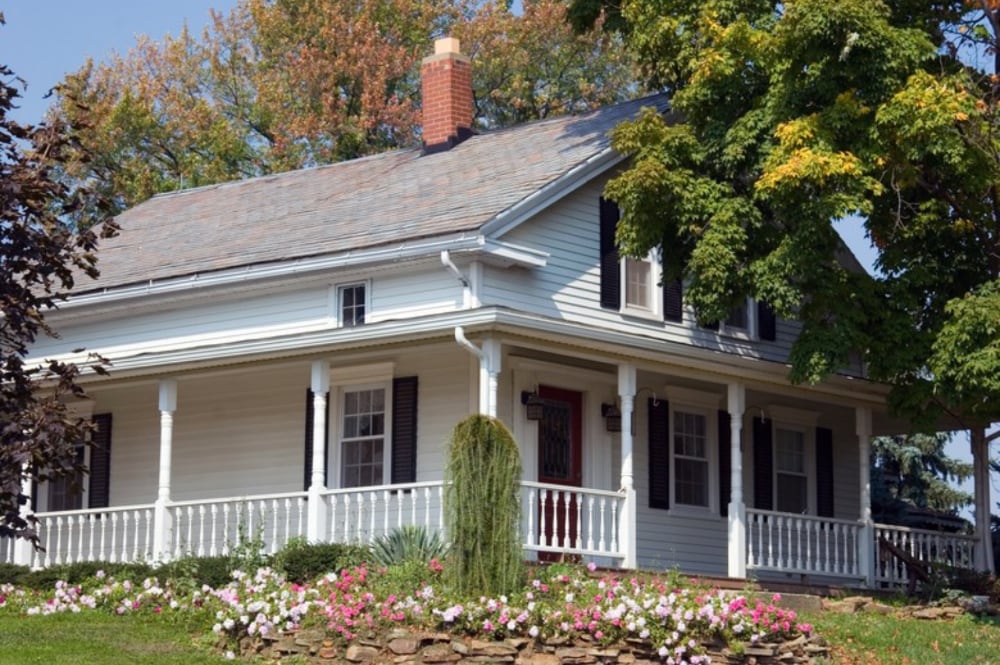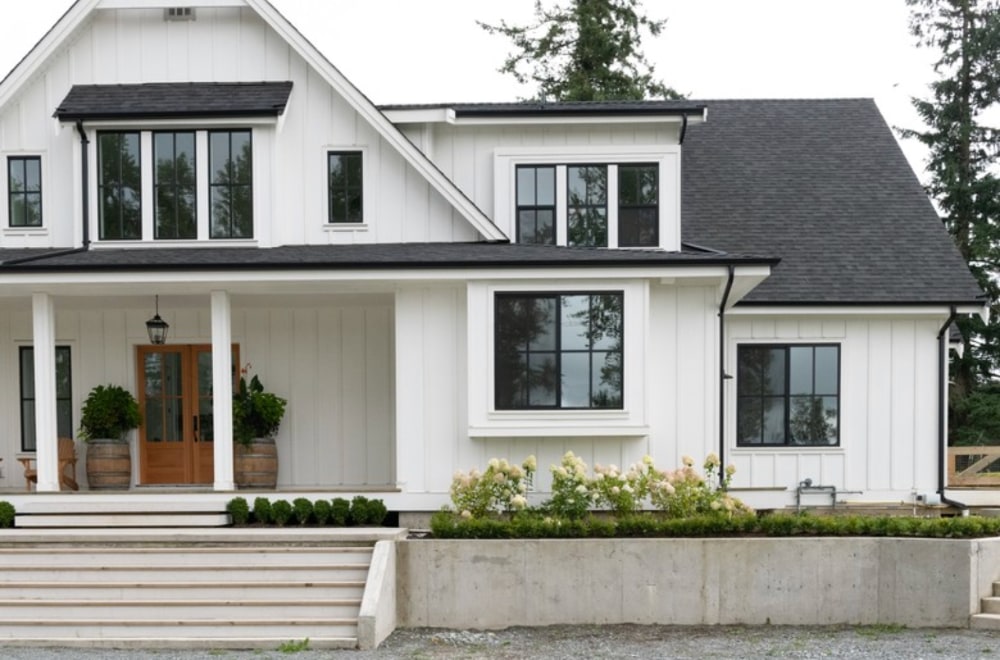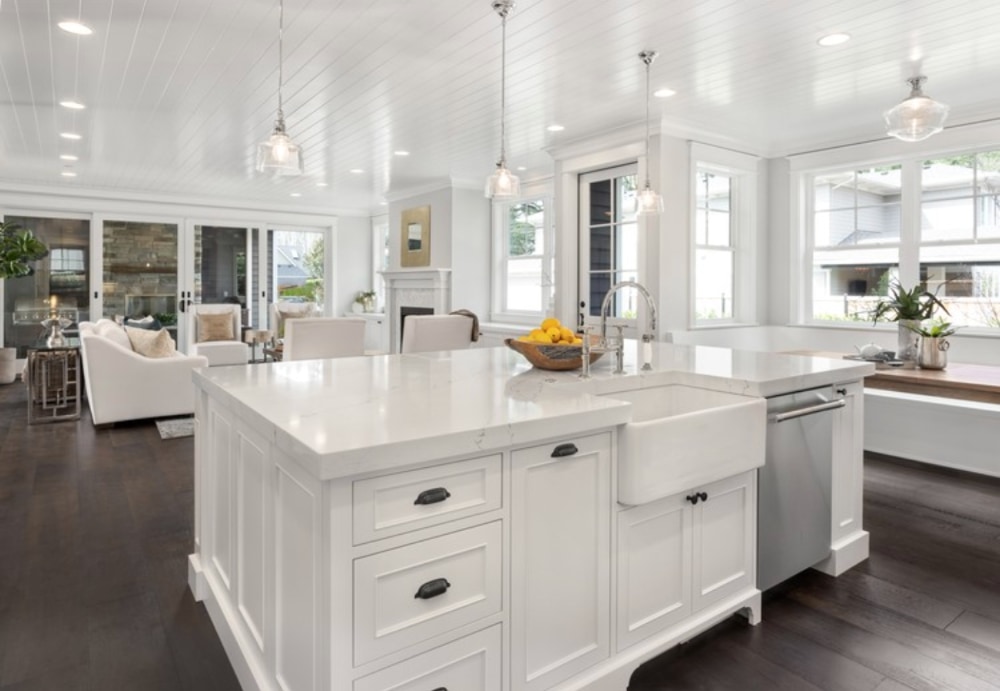Nostalgic Beginnings

Near my hometown in Missouri, I grew up near a large Amish community. Every time I’m in the area, I’m always their simple lives and the throwback to a historical time in America fascinates me. One standout characteristic of their communities is their use of the original farmhouse. In modern architecture and design, many admire the simplicity of the farmhouse which makes it one of the more popular designs today.
When you think of a farmhouse, you may envision a simple rectangular house with a wraparound porch. It may invoke warm feelings, as you may have memories at your grandparents’ house, sitting on the front porch on a warm summer night, or in front of the brick fireplace on a windy winter night. These characteristics convey the classic nature of the farmhouse.
Functionality and Simplicity
The farmhouse was functional as well as simple to build. Farmers in the early United States didn’t have the means to copy the fancy houses of the era, but instead, needed to produce a house quickly and efficiently for their family. The simple rectangular shape with right angles is easy to frame. The clapboard siding, which was good for keeping out wind and rain, was easy to purchase or make locally before transportation could bring new materials from other areas of the country. The roof has a simple structure, usually with gable ends. Wood made up the simple flooring and trim finishes. Local craftsmen or the homeowners themselves made furnishings out of wood as well. Farmers had little extra time and money. Their simple decor of white walls, inside and out, reflects this.
The farmhouse was originally, as the name suggests, built on a farm. The inhabitants of the house spent their time equally indoors as well as outdoors. Doorways to the outdoors and windows were wide and large to let in fresh air. A wide front porch existed to transition from being outdoors, by allowing space to remove shoes and clean off before entering. The kitchen was usually large with a functional island, where cooking, canning, and cleaning took center stage.
The original farmhouse also lent itself to recreation and relaxation. The rooms are often divided, with the formal rooms at the front for enjoying guests. Owners wanted informal rooms hidden away: bedrooms were generally found upstairs, and the kitchen in the back of the house. The wide, covered front porch allowed for recreation and rest outside on hot days. On the contrary, a brick fireplace kept the house warm on cold days and nights.
Modern Farmhouse Touches

Fast forward to today, where the modern farmhouse is all the rage on Pinterest. These days, farmhouses line suburban streets. Farmhouses are now stylish and more upscale. Designers and builders are now almost necessary to achieve the desired look. Compared to the simpler rectangular shape, farmhouses have now taken on more complex shapes to allow for modern additions, such as garages. The staircases in historic farmhouses were hidden in the back of the house but now are showcased by the front entryway. Metal roofs are replacing the original grey and black wood shingles of the 18th century. The availability of more durable siding options has decreased the maintenance needed on the house. A modern farmhouse has a main focus on style and less about functionality. Owners fill their homes with more modern furniture, less dark wood, and more colorful walls and finishes.

Modern farmhouses have the cozy feel of the traditional farmhouse but also integrate modern elements within. Even bigger floor to ceiling windows have replaced The “large” windows of earlier eras. The kitchen is designed as more of a gathering and recreational room and less focused on the hard work of the farm days. Instead of the sectioned-off rooms of old, modern farmhouse rooms flow from one to the other. This, paired with taller ceilings, gives the farmhouse a large, open feel.
The modern farmhouse is a great house for people who have a sense of nostalgia for simpler times. It’s a great house plan for families, having company over, or for those who enjoy comfort. The farmhouse was born out of necessity, but it has now earned its place as a staple of American residential architecture.


